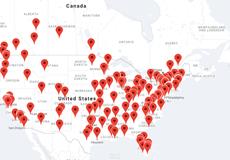2021 Field-Wide Opera Demographic Report
The North American opera field is far from reflective of our nation's racial and ethnic diversity. The murder of George Floyd and others in spring 2020 accelerated opera's long overdue racial reckoning, and opera companies are committing themselves to change.
But how do we begin to measure that change? In spring 2021, OPERA America administered its first-ever field-wide demographic survey of Professional Company Members to establish initial benchmarks. The survey was conducted anonymously among administrative staff and board members with first-person reporting about race/ethnicity, gender, and age. Responses were compiled by OPERA America and analyzed from various perspectives. Salient analyses are shared in this report, with comparisons to U.S. Census data.
The data represent 2,700 individuals — 1,200 administrative staff and 1,500 trustees — from 97 U.S. and Canadian opera companies, slightly more than half of the 184 companies invited to participate. These companies were distributed across all five of OPERA America’s membership budget groups in numbers consistent with the composition of the field. The sample size has been deemed suitable for reporting trends on the entire field.
What did we find in this initial study?
-
Women hold a majority of administrative positions throughout the industry, although the margin decreases in leadership positions (defined as senior staff).
-
One-fifth of opera administrators identify as BIPOC, as compared to two-fifths of the U.S. population.
-
Nearly three-fifths of administrative staff are under the age of 45, although the percentage decreases to just two-fifths when looking at company leadership.
-
Opera company boards are relatively even in gender but skew older and are less diverse than company administrators, with just 15% of trustees identifying as BIPOC
This research is just the beginning. It provides benchmarks for understanding if and how the efforts taken across the industry are working to achieve diversity that is reflective of the communities served by opera companies and of the nation. Participating companies received a customized company “snapshot report” to compare their company demographics to those of their local communities and to establish internal goals for accountability.
OPERA America plans to conduct national demographic surveys and issue reports on an annual basis. Future surveys will build on this one to investigate additional defining characteristics of the opera field that can be useful in setting goals for and measuring progress. Notably, these surveys will expand in reach to include artists as a third essential group alongside administrators and trustees.
Overall, there is hope: The data in this report show that the younger generations of administrators and trustees are more diverse than their older colleagues. With the commitment to becoming a more inclusive and welcoming industry, there is an opportunity for opera to be an art form and industry of, by, and for all people.
Download the Entire Report
The 2021 "Field-Wide Opera Demographic Report" is available as a downloadable PDF.
Frequently Asked Questions
Is this research representative of the entire opera field?
The report provides a reliable picture of the staffs and boards at the 97 Professional Company Members that participated in this study. The margin of error for those companies is less than 2%.
While these 97 companies are slightly more than half of our entire membership, they are proportionately representative of the geographic locations and range of budget sizes and programming of the entire field. Our analysis suggests that the data presented in this report should represent the field as a whole with a margin of error of no more than 3%.
What does it mean that it is “self-reported”?
OPERA America provided each of our Professional Company Members with a survey tool that they shared with their staff and board members. Each respondent reported their own demographic data individually and anonymously, based on their own sense of identity. This ensured that no one was asked to make assumptions about another person’s gender, race, ethnicity, or age by reporting the information second hand.
We are grateful to BIPOC staff members and to members of OPERA America’s Racial Justice Opera Network for feedback, guidance, and support in applying this methodological approach.
Why did you decide to focus on opera administrators and board members?
This type of industry-wide, self-reported demographic research had never been done before in opera. As a starting point, we chose to work with our most engaged partners, the Professional Company Members of OPERA America. Each company has a defined cohort of staff and board members with whom they are in regular contact. Our existing lines of communication with these opera companies allowed us to determine sample sizes and minimum thresholds of reporting, while using a completely anonymous, self-reported survey device.
Will you be surveying opera artists?
Yes. Understanding the demographic landscape of artists in our industry is vital. However, the peripatetic nature of artists’ work makes it harder to collect discrete responses without duplication. We are developing a survey for soloists, choristers, and instrumentalists that will be conducted in 2022 and published in 2023. We will, once again, work with our Professional Company Members to connect us with artists in their orbits.
It is our intention to survey these two main groups — opera artists and administrators/board members — in alternating years moving forward.
What is your definition of BIPOC?
For the purposes of this report, BIPOC was defined as including the following races and ethnicities: Arab/Middle Eastern/North African, Black, Hispanic/Latinx, Asian/Pacific Islander/South Asian, and Native American.
The acronym BIPOC, which stands for Black, Indigenous, and People of Color, entered the vernacular within the last decade. While we have made the decision to use the acronym in our report, we acknowledge that the term is imperfect. We recognize that the experiences of Arab/Middle Eastern/North African, Black, Hispanic/Latinx, Asian/Pacific Islander/South Asian, and Native American are not monolithic and, therefore, we present the data for each discrete group throughout the report.
Who is considered "leadership" in the survey?
In this report, Leadership includes all administrators at a “director” level or above.






